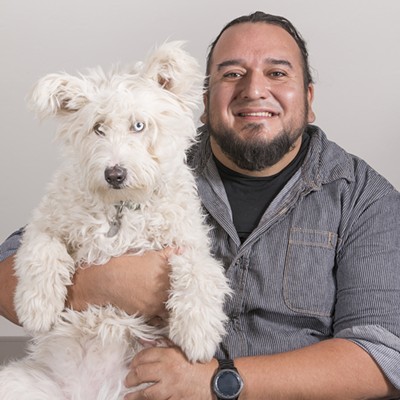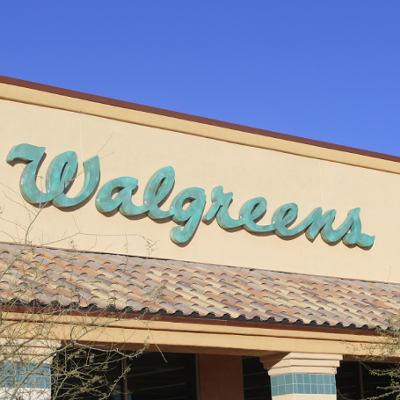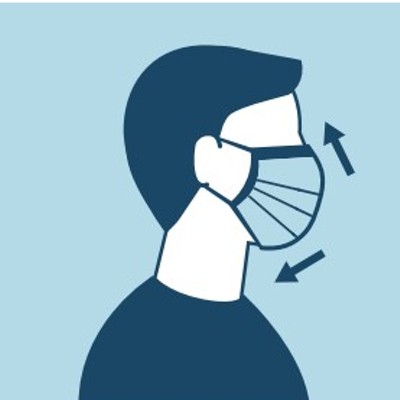Gabriel lives in the part of Rocky Point tourists don't see--where the poor struggle to survive, and where children with serious illnesses go untreated because their families cannot afford medical care.
The 2-year-old was born with a facial hemangioma, a kind of tumor that has insinuated itself into the veins on the left side of his face. Unlike other tumors, the hemangioma is spread out and cannot be removed in a single operation.
Although half of his face is so disfigured he can barely open his left eye, little Gabriel runs around and plays, blissfully unaware that he looks different from other children. Like any 2-year-old, Gabriel is initially shy around strangers, but loves to have his photo taken.
Enter Pamela Lyke-Marquez, her husband, Steve, and a host of volunteers that make up a group called Manos de Ayuda (Helping Hands).
Pamela Lyke-Marquez, a physical therapist, began volunteering in Mexico in 1996 at a special-education school in Peñasco.
"I absolutely loved it, and had always wanted to do work in a Third World country as far back as I could remember," she said.
The volunteer project never really got off the ground, but Pamela and Steve ended up starting Manos de Ayuda. They and a group of volunteers now go to Rocky Point once a month to conduct a medical clinic.
Pamela still works as a physical therapist, but Manos is Steve's full-time job. The real miracle they perform is connecting children with hospitals and doctors that provide free medical service.
For Gabriel, that means his condition, which Mexican doctors mistakenly called a birth injury, was diagnosed correctly. It also means that, thanks to a foundation in Phoenix that the Lyke-Marquezes recruited, he will receive specialized care.
Working with Mexican officials can be time-consuming and frustrating. The Marquezes' home is full of contributions, but it can be hard to get them into Mexico.
"We collected a 15-foot trailer full of donations and very optimistically drove to the border and sat there for eight hours," Pamela recalls of their first attempt. "We found that you have to pay tax on everything you take across."
That's because there is no way for the donors to prove they are not going to sell the goods in Mexico. The Marquezes eventually got the items into Mexico through the help of a kind of ad hoc counterpart in Rocky Point.
It was this incident that caused Pamela to start the nonprofit corporation Manos de Ayuda in 1998. Being a recognized institution works wonders in Mexico.
The Marquezes' first step was to hold a free clinic to see if there were children in the community who needed therapy or equipment.
"Fifty-seven children showed up, and that was without advertising," Pamela said.
In 1999, 294 children visited Manos' Clinica Esperanza, 145 new patients were assessed, and volunteers gave 2,000 hours of services.
At this past September's clinic, 32 volunteers traveled to Rocky Point--physical therapists, occupational therapists, translators and family members who help with administrative work.
Western Medical Inc. donated a wheelchair for a 6-year-old boy who is paralyzed from the mid-chest down. A prosthesis company from Phoenix built him a supportive body jacket so he could sit upright.
"We put him in the wheelchair, adjusted it to him, and the child took off in the chair doing spins. If he could have done wheelies, he would have," Pamela said. "The only way he was able to get around (before) was sliding around, and they have a dirt floor."
The gulf between medical care in Tucson and medical care in Mexico is enormous. In Sonoyta, which is near Rocky Point, a little girl recently died of a bee sting because no antidote was available.
Manos helps get children and a parent into the United States, where doctors and hospitals like University Medical Center and Tucson Medical Center assess the children.
The first child who came across the border through Manos was a 6-year-old girl who had an artificial eye. A doctor in Mexico had said her good eye had to be removed, which would mean she would be blind.
"We immediately got her across and found out it didn't have to be removed. It was an infection from the artificial eye and some small tumors behind the eye. I saw her two months ago and she's still fine," Pamela said.
GABRIEL WAS THE second child Manos de Ayuda brought across the border. Since January 1999, he has seen a pediatrician, Dr. Margaret Trouard; a dermatologist, Dr. Gerald Goldberg; and a pediatric ophthalmologist, Dr. Bradley Schwartz.
"Nobody that we've asked has turned us down," Pamela said. "We've found that people want to help. They just need to know how they can help."
Gabriel had an MRI at UMC, and Dr. Goldberg began a series of steroid injections to help slow the tumor's swelling.
"Now he can see, but his eye is only halfway open," Pamela said.
A foundation in Phoenix has offered to pay for one child at a time to have treatment. Gabriel is the first on the list.
In mid-September, Gabriel and his mother, Elda Gonzalez, traveled from Rocky Point to Tucson, where they stayed at the Ronald McDonald House.
Gabriel is the youngest of four children, and Elda's husband works construction. Through a translator, Elda said that Gabriel is a happy child, although his family is nervous wondering what his treatment will entail, and how soon it will start.
"I feel good because it's not just a regular clinic that I'm not sure about. I know they are going to help," she said.
Manos de Ayuda is well known in Rocky Point, Gonzalez said.
"Everybody knows about the meetings (clinics). They announce it on the radio," she said.
At his September appointment with Dr. Kurt Reinke, Gabriel opened his mouth as wide as he could, and endured a bit of poking and prodding--something he has had to get used to.
"We want to reduce the bulk of (the hemangioma)," Reinke determined.
"The two ways of doing it are trying to inject something that will cause the mass to get smaller on its own versus surgical procedures for removal."
The most important thing is to get Gabriel's left eye to open so it can develop properly, and reduce the pressure on his nasal passages.
"These are very frustrating problems in that we can debulk and remove portions of it, but we can't completely remove it without leaving significant deficits," Reinke said. "Dealing with the eyelid and the functional problems soon is probably in his best interest."
In the coming weeks, Gabriel will begin undergoing procedures to reduce the hemangioma. Meanwhile, Pamela, Steve and the other Manos de Ayuda volunteers will continue assessing and following up on other children at their monthly clinics at the special-education school in Rocky Point.
Pamela and Steve dream of building a permanent clinic site and expanding their mission into other parts of Mexico. The city of Puerto Peñasco has already donated land for a clinic, and a man in Mesa donated two mobile homes, and will donate two others. To get the project moving, Manos needs labor, materials and plumbing.
"The benefit to the community is we're able to see a lot of these children early on so they're not air-vaced out later and costing more money," Pamela said.
Manos de Ayuda has a Web site, www.manosdeayuda.org. The phone number is 760-3311.













